- Home
- Bangkok Museums
- Savings Bank Museum
Savings Bank Museum
history of the Savings Bank
of Thailand
By Eric Lim
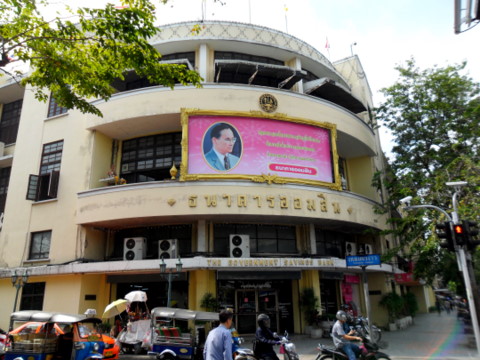
Building housing the savings bank and museum today
The Savings Bank Museum Bangkok traces the history of the Government Savings Bank of Thailand and preserves some very nostalgic images of the bank in the early days.
There are also some quaint methods on how the Savings Bank reached out to the people in remote areas in the past. Some of these methods are still in use today.
The museum is within the premises of the Savings Bank branch at the Khok Wua junction in Ratchadamnoen Avenue.
To get there, please see map to the Savings Bank Museum
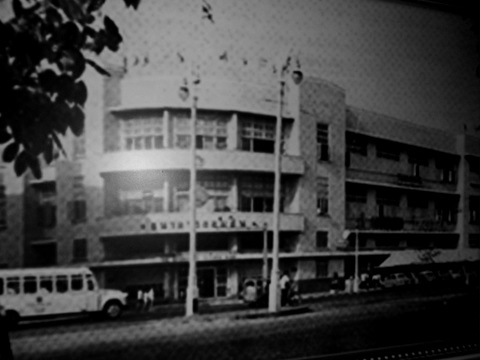
Same building in 1947
History of the Government Savings Bank of Thailand
The idea of a Savings Bank was initiated by King Rama VI (1910 – 1925) in 1913 to introduce a people’s savings bank for the citizens of Thailand. Such a scheme, similar to what many other countries have, would provide banking services to the ordinary folks and inculcate a habit of saving.
The Savings Office, as it was called then, was formally set up on 1 April 1913 under the Treasury Department.
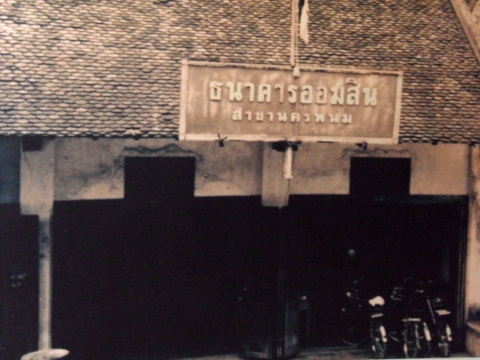
Early savings bank in Nakhon Phanom
In 1929, the Savings Office was transferred to the Post and Telegraph Department.
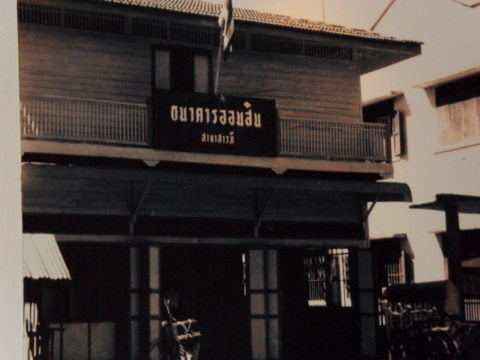
The second phase
On 1 April 1947, the Savings Office was placed under the supervision of the Ministry of Finance and renamed the Government Savings Bank.
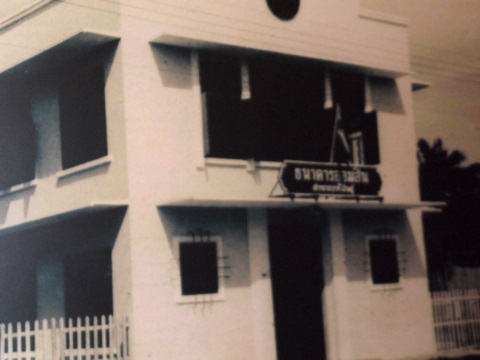
The third phase
By 2010, the bank had more than 930 branches nation-wide and was in its 97th year of operation. It’s a state enterprise under the Ministry of Finance with deposits guaranteed by the government.
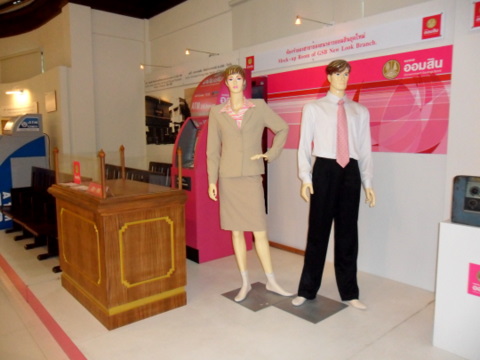
Mock-up of present day savings bank
The Savings Bank is committed to its mission
“to be a secure financial institution of savings, economic and social development particularly to the grassroots economy of the country.”
Introduction of savings bank ATMs
The Savings Bank started its ATM services on 1 October 1993. On 1 April 2001, it joined the ATM network of 18 other commercial banks in Thailand.
As at 1 April 2009, the Government Savings Bank has got 1,166 ATMs nationwide operating 24 hours.
Nostalgic displays at the Savings Bank Museum
Special displays of Royal items
The following special items were contributed by HM the King to the Savings Bank Museum.
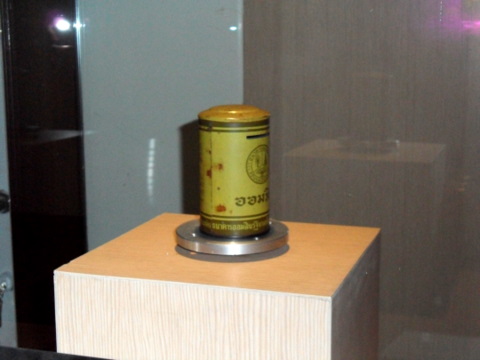
The first savings box presented to HM the King on Government Savings Bank Day 1 April 1962 was made of zinc
Forty-four years later, another savings box was presented to HM the King on the occasion of HM’s 60th anniversary on the throne in 2006.
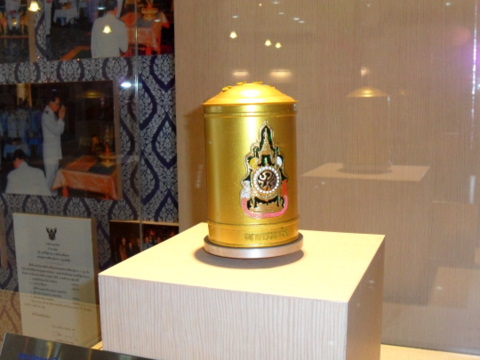
This savings box is 96.5% pure gold, 60.9 baht weight of gold or 923.4 gm (approx. 185 carats) and studded with diamonds
This one’s a real gem!
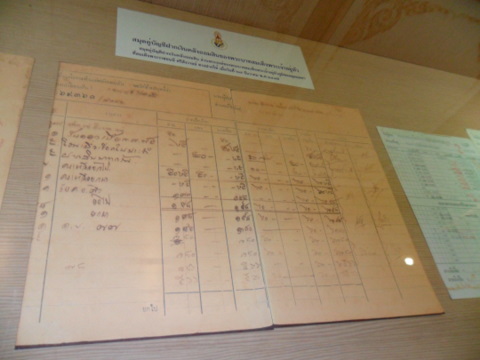
The early savings bank passbook of HM the King
Piggy banks through the ages
The early piggy banks were quite basic, plain metal cans.
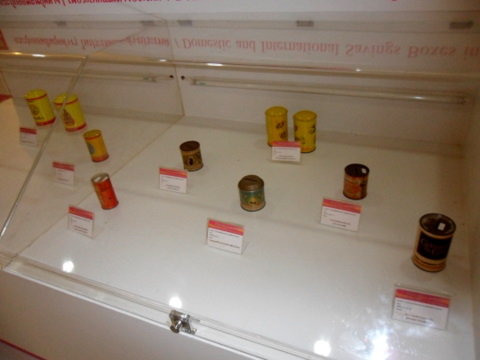
Over time, they came in more attractive shapes.
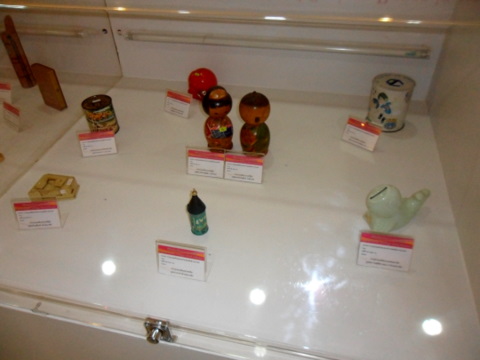

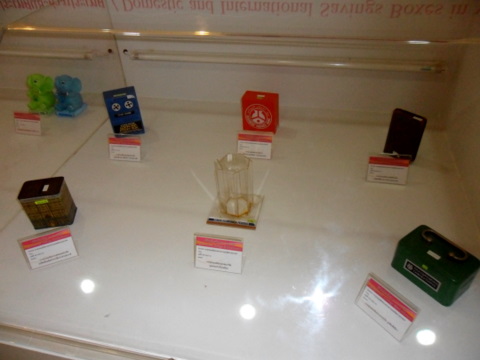
Being Thailand there were, of course, more “jumbos” than “piggies”.

Old savings bank passbooks

Savings bank passbooks in the past
Old saving bank machines
In today’s hi-tech electronic age, the younger generation would consider these machines dinosaurs. But 50 years ago, these machines were probably the state-of-the-art.
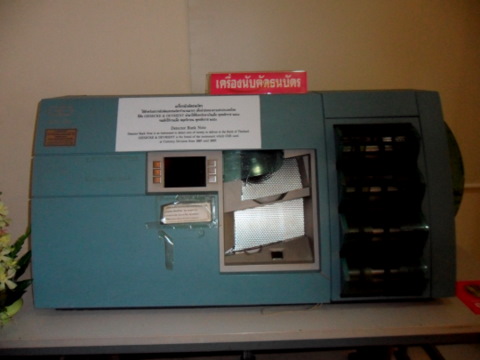
Bank note counting machine
Have you had the chance to use one of these before?
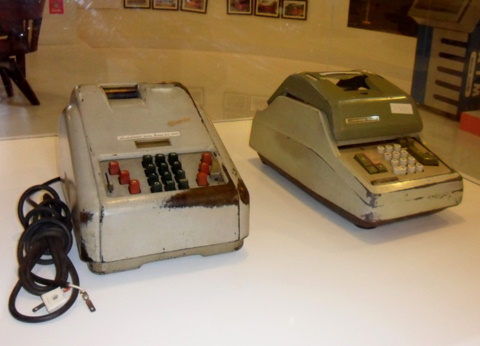
Old calculators
Special features of the Government Savings Bank of Thailand
Savings Bank floating branches
In the old days when Bangkok and many parts of Thailand were more accessible by water than by land, the Government Savings Bank had floating branches to serve the people! These were boats equipped to bring banking services to people living along rivers and canals.
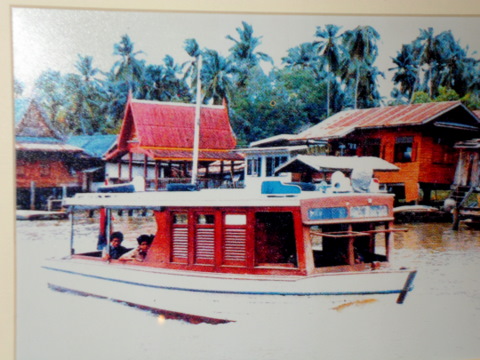
Early savings bank floating branch
This service started in 1958 with floating branches covering Bangkok and the nearby provinces. These were Samut Sakhon, Samut Songkhram, Bang Yai in Nonthaburi, Damnoen Saduak in Ratchaburi, Bang Kontee and Bang Paew.
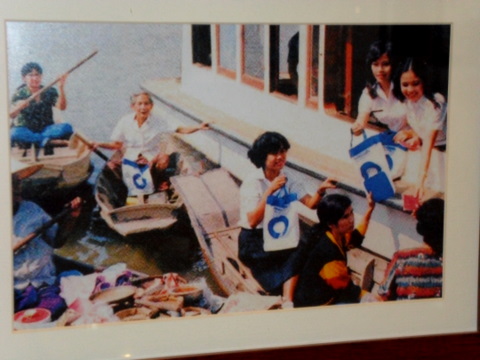
Queue at the floating branch
Riverside residents who were bank customers were given blue flags with the white Savings Bank logo. If they required banking services on any particular day, they would place the flag in front of their homes so that the Savings Bank boat would stop by.
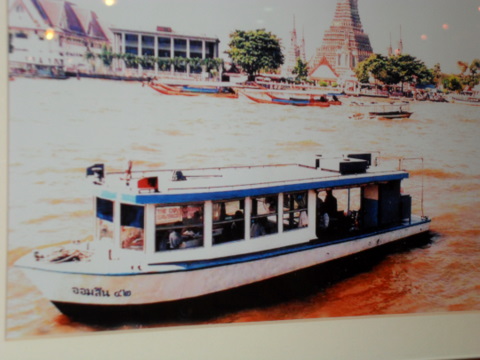
An earlier generation floating branch
Today, there is a floating branch service still in operation. This service is from Pak Klong Talad pier – Phra Chan pier on the Chao Phraya – Bangkok Noi canal – Wat Bot Bon in Bang Kruai, Nonthaburi.
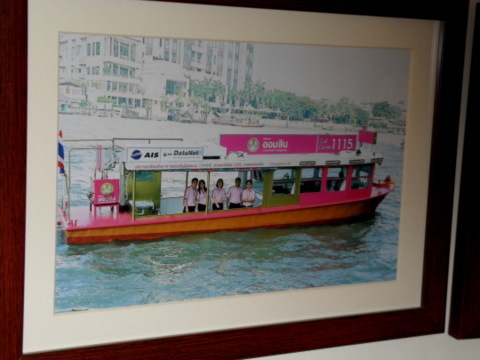
Savings bank floating branch today
The service is from Mondays – Fridays, from 0830 – 1530 hours. Please see the map below for the route of this floating branch.
Map showing the route of the savings bank floating branch
View Route of the Savings Bank floating branch in a larger map
Savings Bank mobile branches
In addition to floating branches, there were mobile branches that operate on land to serve areas that don’t have permanent Saving Bank branches. This service started in 1952 when the other provinces weren’t so developed.
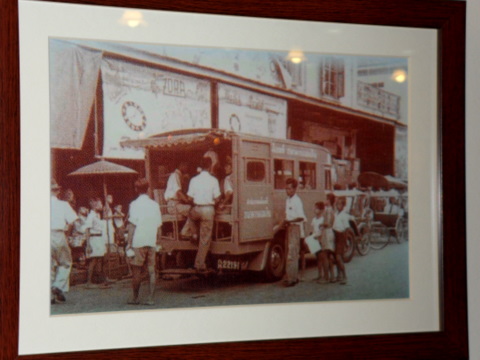
Early savings bank mobile branch on a Land Rover
Land Rovers and buses were initially used for this purpose. Later mini-vans and buses were deployed. This practice continued right through to 2001 when it ceased operations.
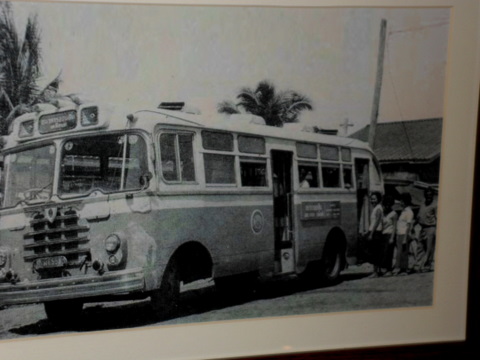
Mobile branch on a bus
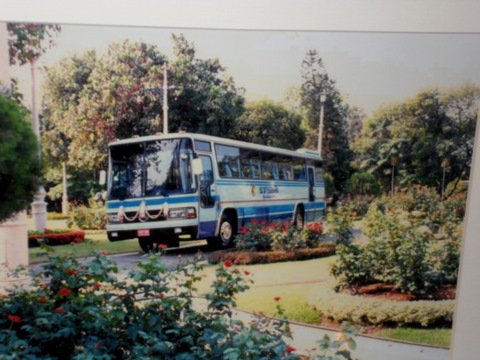
The buses got better
However, in 2005 mobile branches resumed operations, this time with a hi-tech add-on. These mobile branches provided online banking services via a satellite link for accounts to be updated in real-time as transactions are made.
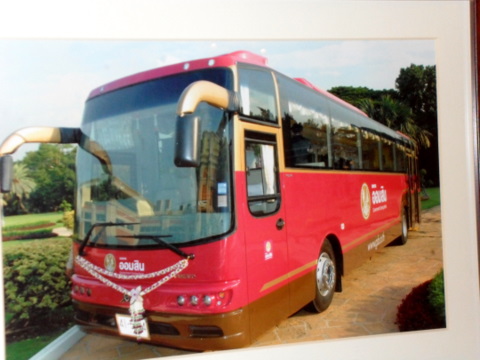
And better
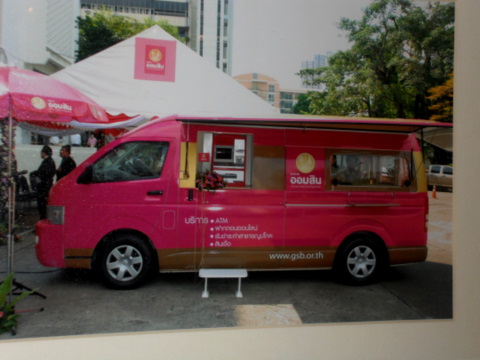
Step up to the counter
Promoting the Savings Bank
Those of us who grew up in the 1950s in SE Asia would remember the open air cinemas. Back then, we didn’t have the huge cineplexes we have today. The few cinemas were in the cities and many couldn’t afford them.
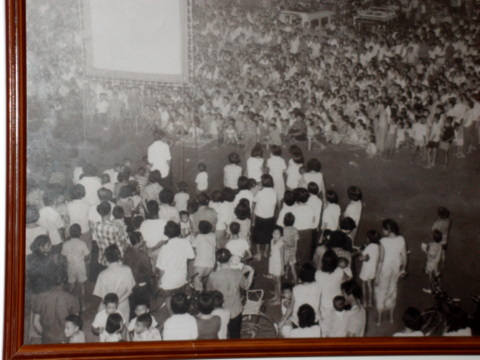
Open air cinema
So it was a real treat to take your low stool or mat and go down to the field to watch a movie under the stars. It was like this in Thailand too in the early days.
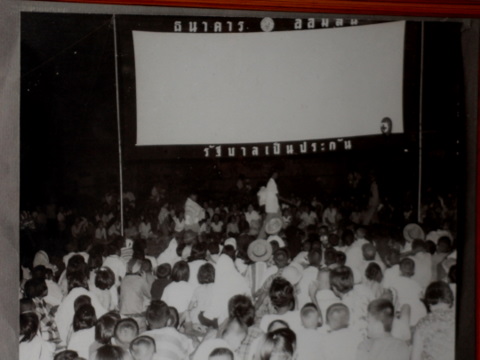
The words at the top read, "Savings Bank" and below, "guaranteed
by the Government"
The Savings Bank made use of these occasions to promote the activities of the bank. Projector teams went to these open air cinemas to show advertising films on the bank’s services during the intermissions.
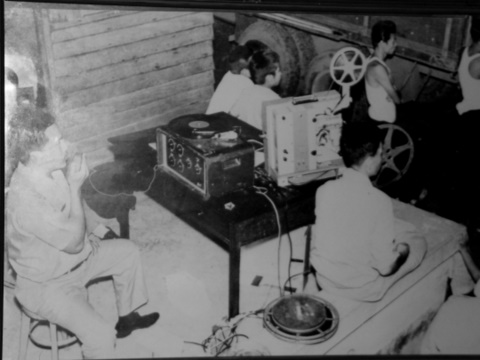
Promoting the savings bank among the people
That ends our nostalgic trip down memory lane through the Savings Bank Museum in Bangkok.
Map to the Savings Bank Museum Bangkok
View Savings Bank Museum Bangkok in a larger map
Back
How to get to there
Take the air-conditioned bus service number 79 from Pratunam (bus stop in front of the Grand Diamond Pratunam Hotel).
The bus will take you to Ratchadamnoen Avenue. Alight after you have passed the Democracy Monument.
The museum is located in the Savings Bank branch at the junction of Tanao Road and Ratchadamnoem Avenue Central (Khok Wua junction). It’s just next to the 14 October 1973 Memorial.
The entrance to the Savings Bank Museum is at the side. But it was locked when I visited the museum. The other way is to go through the banking hall of the Savings Bank. The museum is at the other end of the hall.
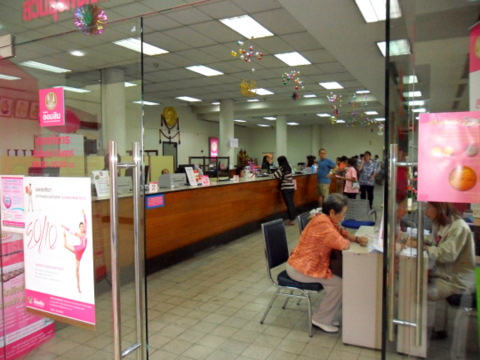
Banking hall at the Savings Bank Ratchadamnoen branch
Opening times
The Savings Bank Museum is open on Mondays, Wednesdays and Fridays from 0830 – 1500 hours. Admission is free.
To return to Bangkok Museums
For a related bank museum, please see Bank of Thailand Museum.
My Kindle e-book

Search Tour Bangkok Legacies with DuckDuckGo
Related pages
Historical places nearby
My Journey through Thailand
Part I The First Steps
My Kindle edition

My Smashwords edition



